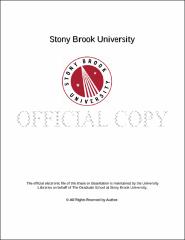| dc.identifier.uri | http://hdl.handle.net/11401/76687 | |
| dc.description.sponsorship | This work is sponsored by the Stony Brook University Graduate School in compliance with the requirements for completion of degree. | en_US |
| dc.format | Monograph | |
| dc.format.medium | Electronic Resource | en_US |
| dc.language.iso | en_US | |
| dc.publisher | The Graduate School, Stony Brook University: Stony Brook, NY. | |
| dc.type | Dissertation | |
| dcterms.abstract | Energetic ion beams have vast potential in medicine, energy, and basic science, providing significant advantages in applications of radiation therapy, nuclear energy, and high energy physics. Conventional acceleration means are inefficient and costly, imposing stringent requirements on space, power, and speed of the machines designed to address these applications. This thesis considers two contrasting approaches to improving ion beam acceleration: fast acceleration using radio-frequency (RF) technology and laser driven acceleration of ion beams from over-dense plasma. We first consider fast acceleration in a synchrotron using conventional RF cavities. We introduce a ferrite based RF scheme for a rapid cycling synchrotron known as ``harmonic ratcheting.'' By systematically decreasing the harmonic number in steps during the acceleration cycle, a reduction in the required frequency range is achieved. Two cavities alternately provide the accelerating voltage to allow tuning. A ratcheting approach allows for a doubling of gap voltage for fixed cavity length and input power. Simulations performed using a 65 m synchrotron design demonstrate the feasibility of the scheme for acceleration of C$^{6+}$ ions to 400 MeV/nucleon at a 15 Hz repetition rate. Next, we investigate the acceleration of ions through the interaction of an intense CO$_2$ laser and over-dense plasma. Brookhaven National Laboratory\textsc{char13}s Accelerator Test Facility possesses a TW-class CO$_2$ laser, with the unique capability to produce a single intense 5 ps pulse at 10 $mu$m. This allows for the use of high purity gas jet targets at densities which exceed the critical density of the laser light. We demonstrate the repeatable acceleration of ions using a two pulse technique. A pre-pulse containing a few $%$ of the main pulse energy arrives 25 ns prior to the main pulse, driving a hydrodynamic blast wave into the gas target. The main pulse then drives an electrostatic shock into the shaped plasma, producing ion beams with higher peak energies than predicted by other approaches. We observe accelerated beams only for a narrow range of pre-pulse energies, indicating the importance of the target density profile in enabling the acceleration. | |
| dcterms.available | 2017-09-20T16:50:59Z | |
| dcterms.contributor | Peggs, Steve | en_US |
| dcterms.contributor | Drees, Axel | en_US |
| dcterms.contributor | Stephens, Peter | en_US |
| dcterms.contributor | Zingale, Mike | en_US |
| dcterms.contributor | Sheehy, Brian | en_US |
| dcterms.contributor | Pogorelsky, Igor. | en_US |
| dcterms.creator | Cook, Nathan | |
| dcterms.dateAccepted | 2017-09-20T16:50:59Z | |
| dcterms.dateSubmitted | 2017-09-20T16:50:59Z | |
| dcterms.description | Department of Physics. | en_US |
| dcterms.extent | 213 pg. | en_US |
| dcterms.format | Monograph | |
| dcterms.format | Application/PDF | en_US |
| dcterms.identifier | http://hdl.handle.net/11401/76687 | |
| dcterms.issued | 2015-08-01 | |
| dcterms.language | en_US | |
| dcterms.provenance | Made available in DSpace on 2017-09-20T16:50:59Z (GMT). No. of bitstreams: 1
Cook_grad.sunysb_0771E_12168.pdf: 19705079 bytes, checksum: 4d3c88fb2cc9fccac48533cdbc92a9ec (MD5)
Previous issue date: 2014 | en |
| dcterms.publisher | The Graduate School, Stony Brook University: Stony Brook, NY. | |
| dcterms.subject | accelerator physics, ion beams, laser driven ion acceleration, plasma physics, radiation therapy, rapid cycling synchrotrons | |
| dcterms.subject | Physics | |
| dcterms.title | Alternative approaches to rapid acceleration of ion beams - harmonic ratcheting for fast RF acceleration and laser driven acceleration of gas jet targets | |
| dcterms.type | Dissertation | |

